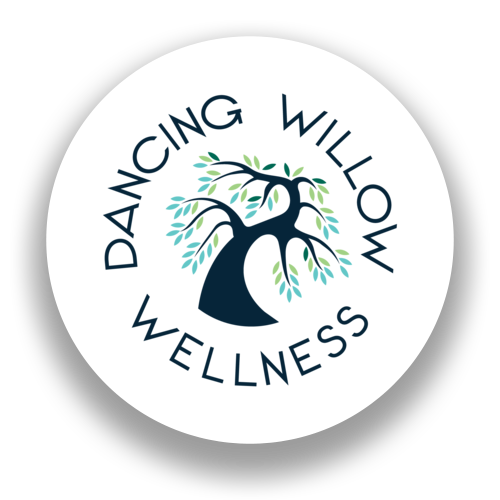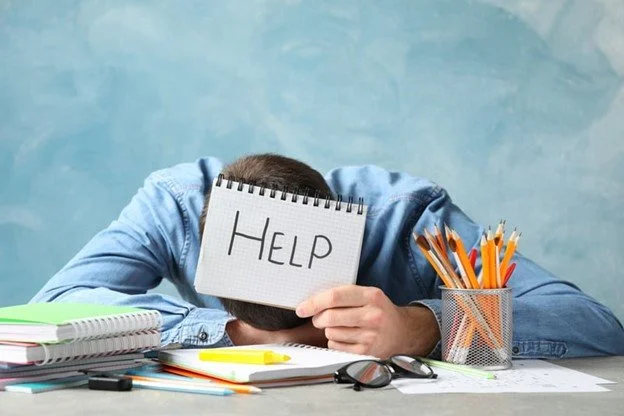The Complete Guide to Burnout Recovery: Symptoms, Causes & How to Heal
Burnout isn’t just about being tired. It’s a full-body shutdown. Over time, the constant push through deadlines, obligations, and emotional demands wears you down. Slowly, almost imperceptibly, your energy drains, your resilience fades, and everyday tasks begin to feel impossible. Burnout doesn’t tap you on the shoulder, it knocks you off your feet.
This guide is here to help you understand what’s happening inside your body and mind, why it feels so hard to function, and how to start healing gently, realistically, and with compassion. You don’t need to fix everything. You just need to stop the spiral.
What Burnout Really Is (and Isn’t)
Burnout isn’t laziness or weakness. It’s what happens when your stress response stays stuck in the "on" position for too long. Your nervous system floods with cortisol, your body diverts energy from long-term repair to short-term survival, and eventually, your systems begin to fail under the pressure.
The symptoms aren’t just emotional. Burnout shows up physically: chronic fatigue, digestive issues, brain fog, mood swings, insomnia, and more. You might feel like a shell of your former self. That’s not failure, it’s a signal.
If you're wondering whether what you're feeling is more than everyday stress, the article Understanding Burnout: Symptoms and Who Is at Risk breaks down key signs to watch for and explains who is most vulnerable. of the most common signs and who’s most at risk.
How Burnout Breaks You Down
Stress doesn’t just feel bad. It reshapes how your body functions. When your hypothalamic-pituitary-adrenal (HPA) axis stays activated, cortisol rises and throws everything out of balance: blood sugar, hormones, digestion, immunity, even your brain chemistry.
The result? You can’t focus. You get sick more often. You’re exhausted but wired. You cry for no reason or can’t feel much at all.
To understand what's happening under the surface, The Physiology of Burnout and Why It Matters explains how stress reshapes your biology and why this matters for long-term recovery.
The First Step Isn’t Action. It’s Subtraction.
You can’t heal in the same environment that made you sick. Before your body can rebuild, it needs you to stop the bleeding. That means removing or reducing the stressors that are keeping you in survival mode.
Start small. Can you cancel something? Ask for help? Say no without guilt? This isn’t quitting, it’s choosing to preserve the energy you need to survive.
If you’re unsure how to reduce your load, Burnout Recovery: Removing Stressors – The First Step outlines gentle ways to reclaim time and energy without overwhelm.
Sleep: The Foundation of Recovery
Burnout hijacks sleep and that’s a problem, because sleep is how your body repairs. It resets cortisol, calms inflammation, strengthens immunity, and restores brain function.
If you’re not sleeping, recovery stalls. Treat sleep like a priority, not a luxury. Dim lights early. Ditch screens. Set a wind-down routine that tells your body it’s safe to rest.
The Power of Sleep in Burnout Recovery explains why sleep is such a powerful recovery tool and what to do when burnout makes it harder to get.
Rest Isn’t a Luxury. It’s Medicine.
Rest doesn’t just mean sleep. It means deliberately stepping out of overdrive, mentally, emotionally, physically. It means space to exhale, to feel, to heal.
For those recovering from burnout, rest is not a reward, it’s a biological requirement. It’s how we reset the nervous system, restore cognitive function, and rebuild resilience.
Not sure how to rest when you’re not sleeping? Rest Beyond Sleep explores why rest is essential, why it’s so hard to allow, and how to practice active rest without guilt.
Food Is a Critical Part of the Fix
When you're burned out, your body is running on empty. Nutrient stores, especially magnesium, B vitamins, omega-3s, and vitamin C get drained fast under chronic stress. Replenishing them is essential.
What should you eat? Real food. Regular meals. Protein, fats, and complex carbs at every meal. You don’t need perfection. You need nourishment that supports neurotransmitter function, balances blood sugar, and helps your body rebuild.
For a closer look at what your body needs to rebuild, Burnout Recovery and Nutrition: What to Eat When You're Running on Empty outlines the essential nutrients for brain, hormones, and nervous system repair.
But What If You’re Too Tired to Cook?
This is where most plans fall apart. Advice like “just eat better” assumes you have energy you don’t. That’s why Burnout Recovery and Nutrition: How to Eat When You're Running on Empty offers no-pressure strategies for feeding yourself even when you're operating on fumes. when even basic prep feels impossible.
From fridge trays to snack baskets to smoothie kits, these low-effort options help you get nourishment without relying on motivation or executive function. No shame. No guilt. Just support.
Burnout Recovery Is Slow. And That’s Okay.
There’s no one-size-fits-all plan. Some days you’ll feel like you’re making progress. Other days, brushing your teeth will feel like a win. That’s part of it.
Recovery isn’t about doing everything right. It’s about listening to your body, protecting your energy, and choosing rest when you can. Each small act of care, each nap, each meal, each no is a brick in the path back to yourself.
You don’t have to be perfect. You just have to keep showing up.
Rebecca
Want to read the entire Burnout Series? Check them out here:




